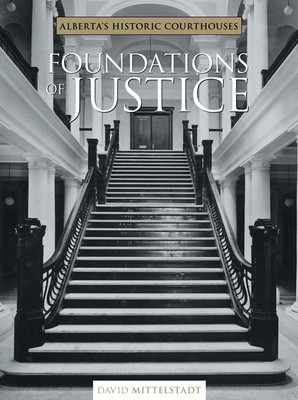
- We will send in 10–14 business days.
- Author: David Mittelstaat
- Publisher: University of Calgary Press
- Year: 2005
- Pages: 384
- ISBN-10: 1552381234
- ISBN-13: 9781552381236
- Format: 21 x 27.6 x 2.6 cm, kieti viršeliai
- Language: English
- SAVE -10% with code: EXTRA
Reviews
Description
The courthouse has always stood as a symbol of law, order, and civic pride, and has played an important role in reflecting and upholding society's cultural ideals. With Foundations of Justice, author David Mittelstadt, along with the Legal Archives Society of Alberta, has crafted a striking work about the history of courthouses built in Alberta between 1874 and 1950.
Based on the author's extensive research, it considers the influence of local and provincial politics on courthouse construction in addition to the cultural and economic milieu of the time. As part of the overall historical context, Foundations of Justice also presents some of the more colourful aspects of Alberta's little-known legal history, as well as an account of the evolution of the court system. Most courthouses have a rich and detailed history, and as landmarks, they are important not only for their functional requirements but as symbols of the cultural ideals that they reflect in our society.
EXTRA 10 % discount with code: EXTRA
The promotion ends in 23d.03:53:25
The discount code is valid when purchasing from 10 €. Discounts do not stack.
- Author: David Mittelstaat
- Publisher: University of Calgary Press
- Year: 2005
- Pages: 384
- ISBN-10: 1552381234
- ISBN-13: 9781552381236
- Format: 21 x 27.6 x 2.6 cm, kieti viršeliai
- Language: English English
The courthouse has always stood as a symbol of law, order, and civic pride, and has played an important role in reflecting and upholding society's cultural ideals. With Foundations of Justice, author David Mittelstadt, along with the Legal Archives Society of Alberta, has crafted a striking work about the history of courthouses built in Alberta between 1874 and 1950.
Based on the author's extensive research, it considers the influence of local and provincial politics on courthouse construction in addition to the cultural and economic milieu of the time. As part of the overall historical context, Foundations of Justice also presents some of the more colourful aspects of Alberta's little-known legal history, as well as an account of the evolution of the court system. Most courthouses have a rich and detailed history, and as landmarks, they are important not only for their functional requirements but as symbols of the cultural ideals that they reflect in our society.


Reviews